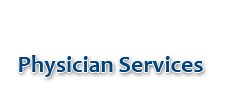| |
Home sleep testing devices have been developed in an effort to cater to a more convenient and comfortable sleep study experience. In theory, it is a great idea. Who wouldn't want to have their test done in their own bed? Unfortunately, it is not thorough enough.
A traditional sleep study requires a trip to the sleep center for an overnight stay. In some cases, this may mean two separate nights. During this study, several things are monitored, including brain waves, respiratory conditions, muscle activity, the heart, and blood oxygen levels. All of these things are crucial to diagnosing any of the various sleep disorders. While a home testing device monitors only the respiratory and blood oxygen levels, home testing alone does not provide enough information to accurately diagnose any other sleep disorder other than one resulting from a respiratory disorder. Without the presence of brain wave activity, the technologist and physician cannot even determine if the patient was sleeping. This leaves a huge margin for error and can require several nights of trying to obtain the data as well as a trip to your local sleep center anyway. Unfortunately, home sleep tests are not thorough enough for some sleep disorder diagnosis.
Below are the most common sleep studies performed in our sleep centers.
A sleep recording or polysomnogram (PSG) is usually done while you stay overnight at a sleep center or sleep laboratory. Electrodes and other monitors are placed on your scalp, face, chest, limbs, and finger. While you sleep, these devices measure your brain activity, eye movements, muscle activity, heart rate and rhythm, blood pressure, and how much air moves in and out of your lungs. This test also checks the amount of oxygen in your blood.
This daytime sleep study measures how sleepy you are and is particularly useful for diagnosing narcolepsy. In this test, monitoring devices for sleep stage are placed on your scalp and face. You are asked to nap four or five times for 20 minutes every 2 hours during the day. Technicians note how quickly you fall asleep and how long it takes you to reach various stages of sleep, especially REM sleep, during your naps. Normal individuals either do not fall asleep during these short designated naptimes or take a long time to fall asleep. People who fall asleep in less than 5 minutes are likely to require treatment for a sleep disorder, as are those who quickly reach REM sleep during their naps.
This test measures whether you can stay awake during a time when you are normally awake.
Continuous Positive Airway Pressure (CPAP) Titration is performed while the patient is breathing on CPAP in an effort to eliminate respiratory events occurring during the patient's sleep. CPAP is initiated and is titrated upward until respiratory events, sleep arousals, and snoring are eliminated.
This is a combination test incorporating both a diagnostic PSG and a CPAP titration over the course of one night. The apneahypopnea index (AHI) must meet or exceed insurance carrier requirements during the diagnostic portion of the study; which may vary by insurance carrier. The parameters monitored include those recorded in the diagnostic PSG with the addition of CPAP levels during the therapy trial. CPAP therapy may be initiated at lower AHI levels upon the physician's request; however, in these cases caution must be taken to meet specific payor guidelines to justify CPAP rental coverage at home.
|





